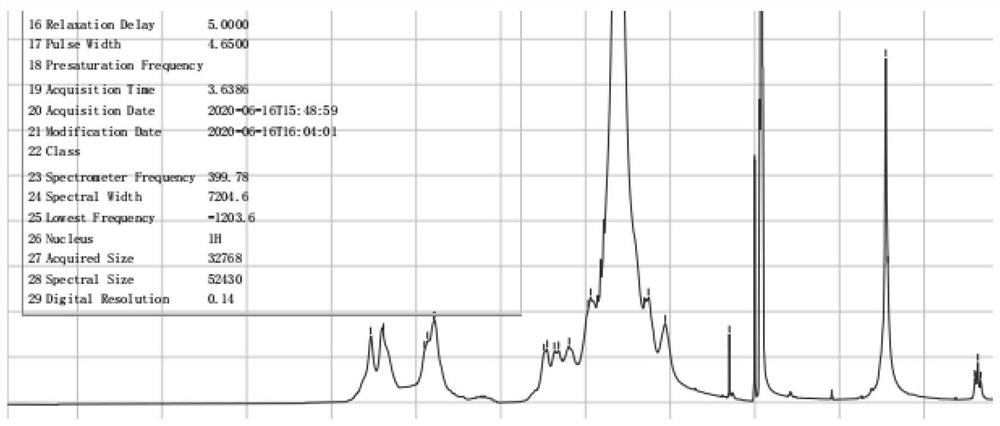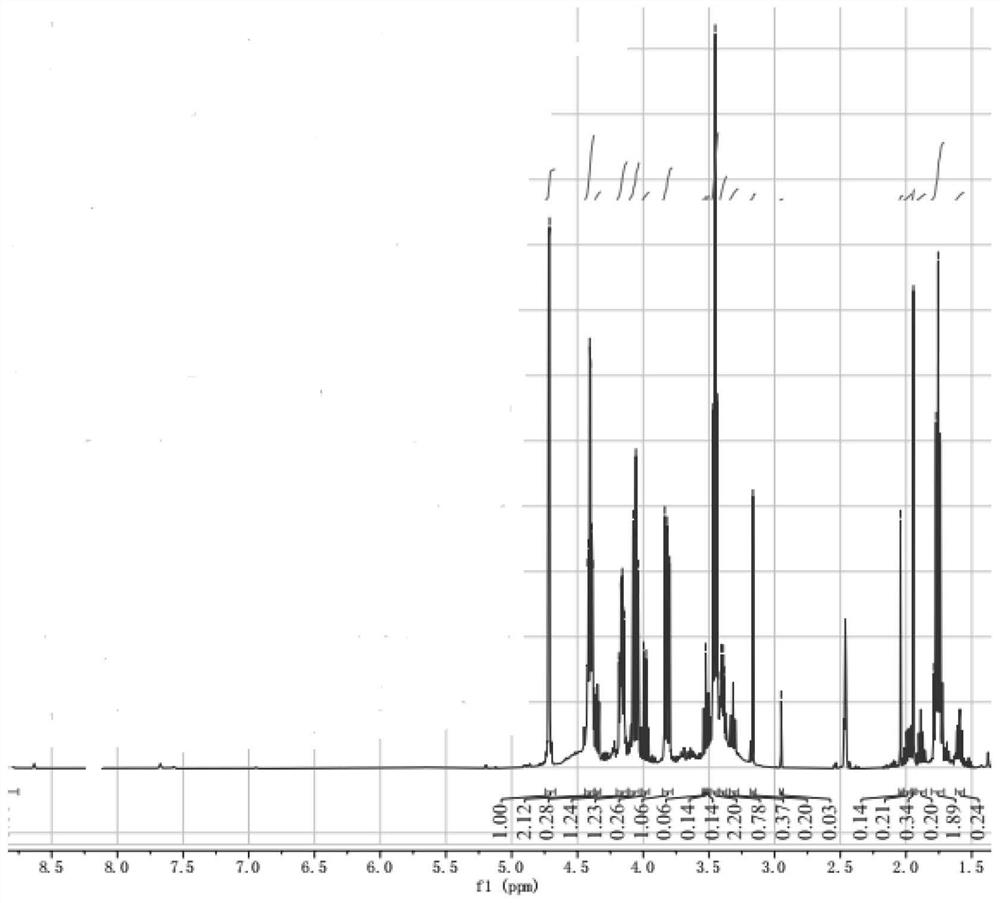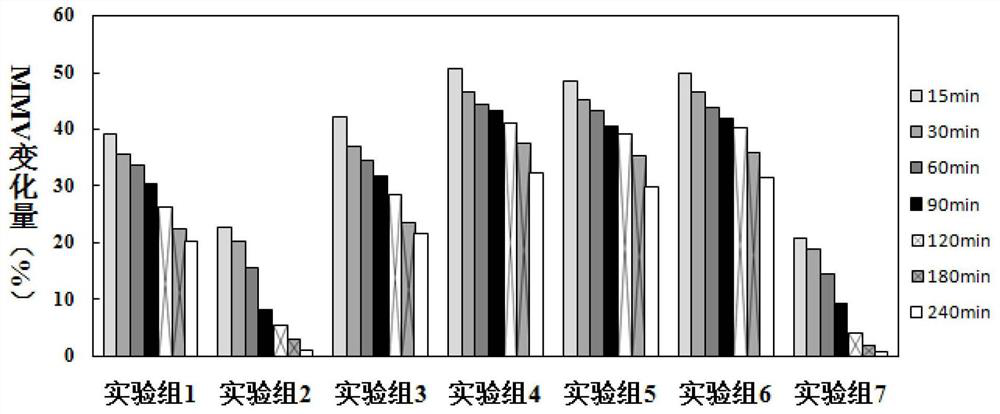One kind of L -vitamin C hyaluronate derivatives and their preparation methods and applications
A technology of hyaluronic acid ester and hyaluronic acid, applied in the fields of medicine and daily necessities, can solve the problems of strong irritation, unstable L-vitamin C structure, and reduced activity of vitamin C derivatives, and achieve the effect of ensuring stability
- Summary
- Abstract
- Description
- Claims
- Application Information
AI Technical Summary
Problems solved by technology
Method used
Image
Examples
Embodiment 1
[0084] The preparation of embodiment 1 hyaluronic acid-CTA salt
[0085] Dissolve 300 g of sodium hyaluronate with a molecular weight of 10 kDa to 100 kDa in 10 L of deionized water and set aside. 300g of cetyltrimethylammonium chloride was dissolved in 6L of deionized water, and then sodium hyaluronate solution was added dropwise. After reacting at 40°C for 16 hours, a white solid precipitated out. Filter and dry the solid at 50-55°C under reduced pressure to obtain the product (yield: 486g).
Embodiment 2
[0086] Embodiment 2 L-vitamin C and bromopropanol etherification reaction
[0087] Under the protection of nitrogen, 211g of triphenylphosphine was added into 500mL of tetrahydrofuran, stirred until it was completely dissolved, and cooled to about 0°C in a brine ice bath. 212 g of 1,2-diiodoethane was dissolved in 200 mL of tetrahydrofuran, and added dropwise to the triphenylphosphine solution. After stirring for 30 minutes, a solid precipitated out. Under nitrogen protection, 50 g of L-vitamin C and 50 g of 3-bromo-1-propanol were dissolved in 300 mL of tetrahydrofuran and added dropwise to the reaction system. After the dropwise addition, the temperature was raised to 20-30°C and stirred for 16 hours. Next, the reaction temperature was increased to 40° C. and stirred for 3 hours, and the reaction was detected by thin layer chromatography (ethyl acetate:ethanol:water=20:10:1) to complete. The reaction system was concentrated until no solvent dripped out to obtain a white...
Embodiment 3
[0088] Embodiment 3 L-vitamin C and bromobutanol etherification reaction
[0089] Under the protection of nitrogen, 230 g of triphenylphosphine was added into 540 mL of tetrahydrofuran, stirred until it was completely dissolved, and cooled to about 0° C. in a brine ice bath. 230 g of 1,2-diiodoethane was dissolved in 250 mL of tetrahydrofuran, and added dropwise to the triphenylphosphine solution. After stirring for 30 minutes, a solid precipitated out. Under nitrogen protection, 55g of L-vitamin C and 60g of 4-bromo-1-butanol were dissolved in 300mL of tetrahydrofuran and added dropwise to the reaction system. After the dropwise addition, the temperature was raised to 20-30°C and stirred for 16 hours. Next, the reaction temperature was raised to 40°C and stirred for another 3 hours. Thin layer chromatography (ethyl acetate:ethanol:water=20:9:1) detected that the reaction was complete. The reaction system was concentrated until no solvent dripped out to obtain a white sol...
PUM
| Property | Measurement | Unit |
|---|---|---|
| molecular weight | aaaaa | aaaaa |
| molecular weight | aaaaa | aaaaa |
| degree of substitution | aaaaa | aaaaa |
Abstract
Description
Claims
Application Information
 Login to View More
Login to View More - R&D
- Intellectual Property
- Life Sciences
- Materials
- Tech Scout
- Unparalleled Data Quality
- Higher Quality Content
- 60% Fewer Hallucinations
Browse by: Latest US Patents, China's latest patents, Technical Efficacy Thesaurus, Application Domain, Technology Topic, Popular Technical Reports.
© 2025 PatSnap. All rights reserved.Legal|Privacy policy|Modern Slavery Act Transparency Statement|Sitemap|About US| Contact US: help@patsnap.com



